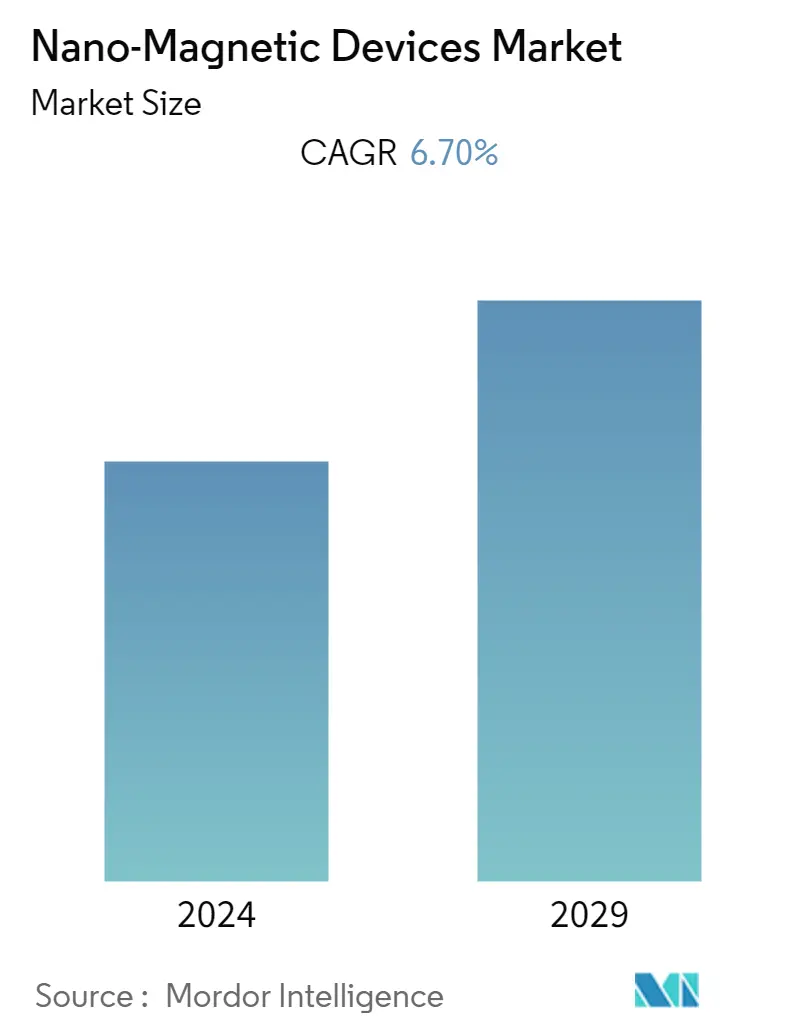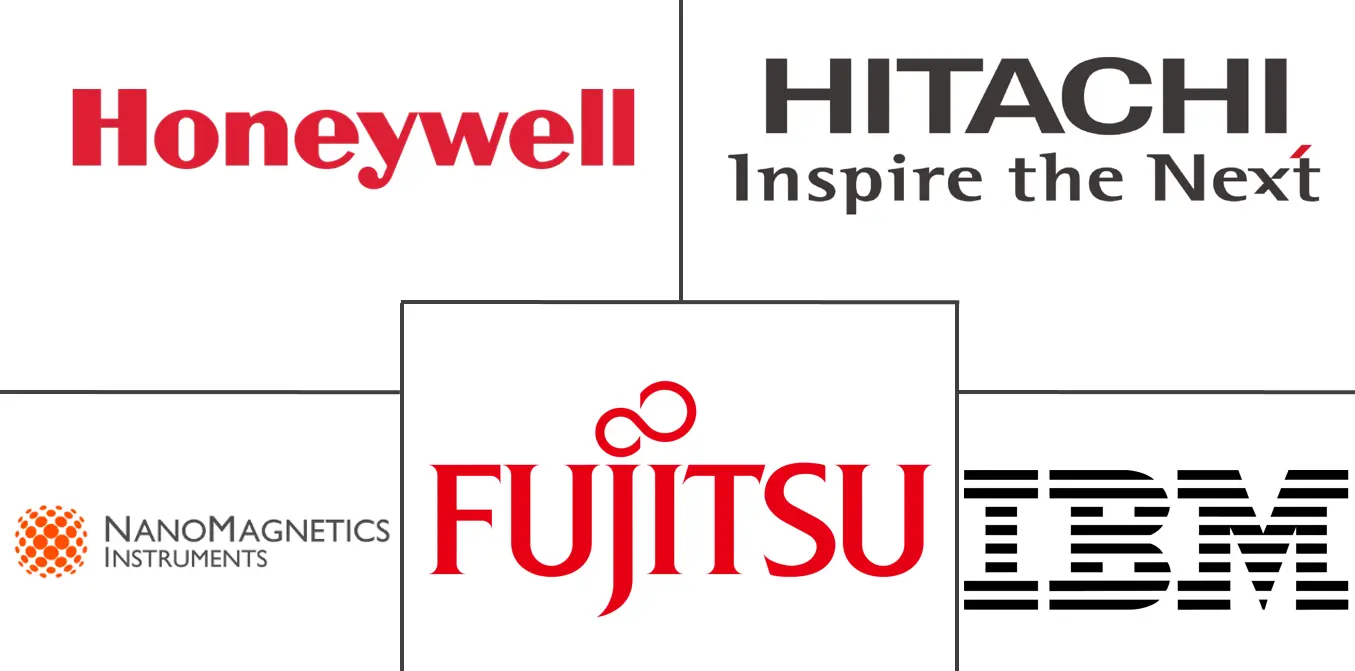Market Size of Nano-Magnetic Devices Industry

| Study Period | 2019 - 2029 |
| Base Year For Estimation | 2023 |
| CAGR | 6.70 % |
| Fastest Growing Market | Asia Pacific |
| Largest Market | North America |
| Market Concentration | Medium |
Major Players
*Disclaimer: Major Players sorted in no particular order |
Need a report that reflects how COVID-19 has impacted this market and its growth?
Nano-Magnetic Devices Market Analysis
The nano-magnetic devices market is expected to grow at a CAGR of about 6.7% during the forecast period of 2021-2026. The major driver for the growth of the nano-magnetic device market is the rising demand for nanotechnology. There is an increasing requirement for nanotechnology in advanced manufacturing applications due to the need for compact performance and size reduction of electronics. Nanotechnology has been majorly adopted by developed economies like Germany, the United States, Canada, and France, among others. Furthermore, the rising demand for energy-efficient devices is also driving the growth of the market. However, the market is not yet fully commercialized, with the increasing number of research initiatives across the globe that will drive the growth of the market in the coming years.
- Nano-magnetic devices have gained traction in recent times; this is mostly due to the rising adoption of advanced and modernized electronic appliances. Increasing initiatives in some developed economies related to nanotechnology are contributing to the development growth of nano-magnetic devices.
- The increasing pace of research related to nano-magnetic device associated technologies are also creating opportunities for the market. For instance, in October 2019, researchers at the IIT Hyderabad (India) have developed low-power chips, which can be used in AI-powered devices. The researchers have developed magnetic quantum-dot cellular automata (MQCA)-based nano-magnetic logic design methodology of arithmetic circuits.
- In May 2020, a team of researchers of ICMAB, the UAB, and the ALBA Synchrotron, along with a bunch of scientists from the ICN2and the UB, have developed nanoneedles to improve robustness and capacity of magnetic memory devices.
- In April 2020, a research funded by Sandia National Laboratories and a National Science Foundation has developed magnetic nanowires to build more energy-efficient smart computers rather than using silicon chips.
- With the increasing incidences of COVID-19 across the globe, vendors present in the market are investing in research activities for the development of nanotechnology-enabled sensors to fight against the lethal virus.
- For instance, in April 2020, a group of engineers at Washington University in St. Louis received federal funding for a rapid Coronavirus test using a newly developed nanotechnology. The group has developed a highly sensitive and significantly accurate biosensor based on a fluorescent nanoprobe, which can be deployed across broad COVID-19 testing applications.
